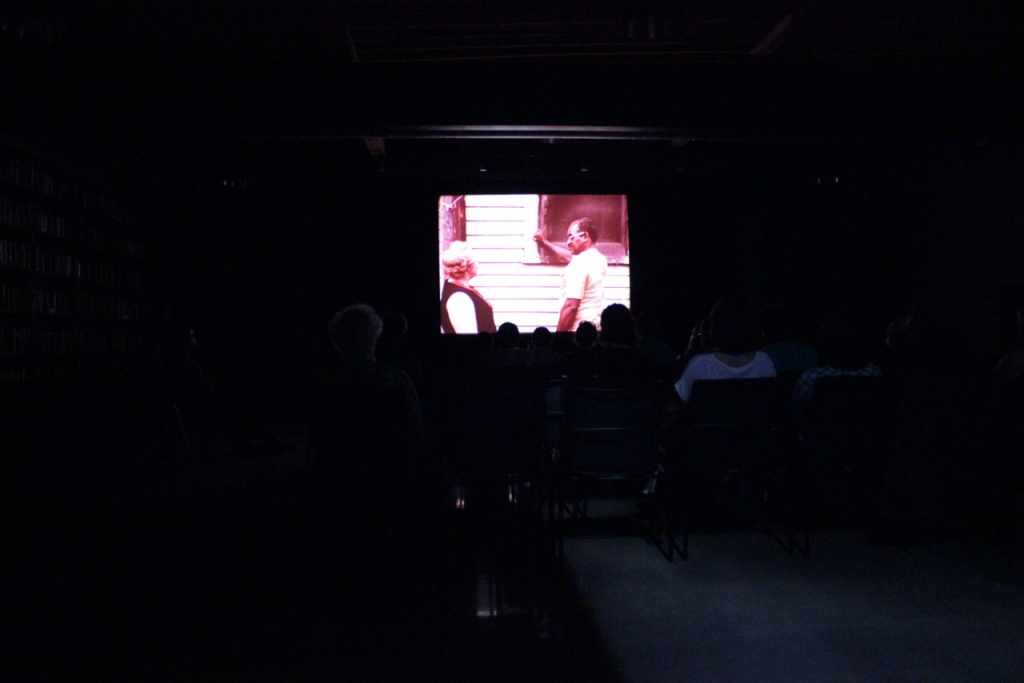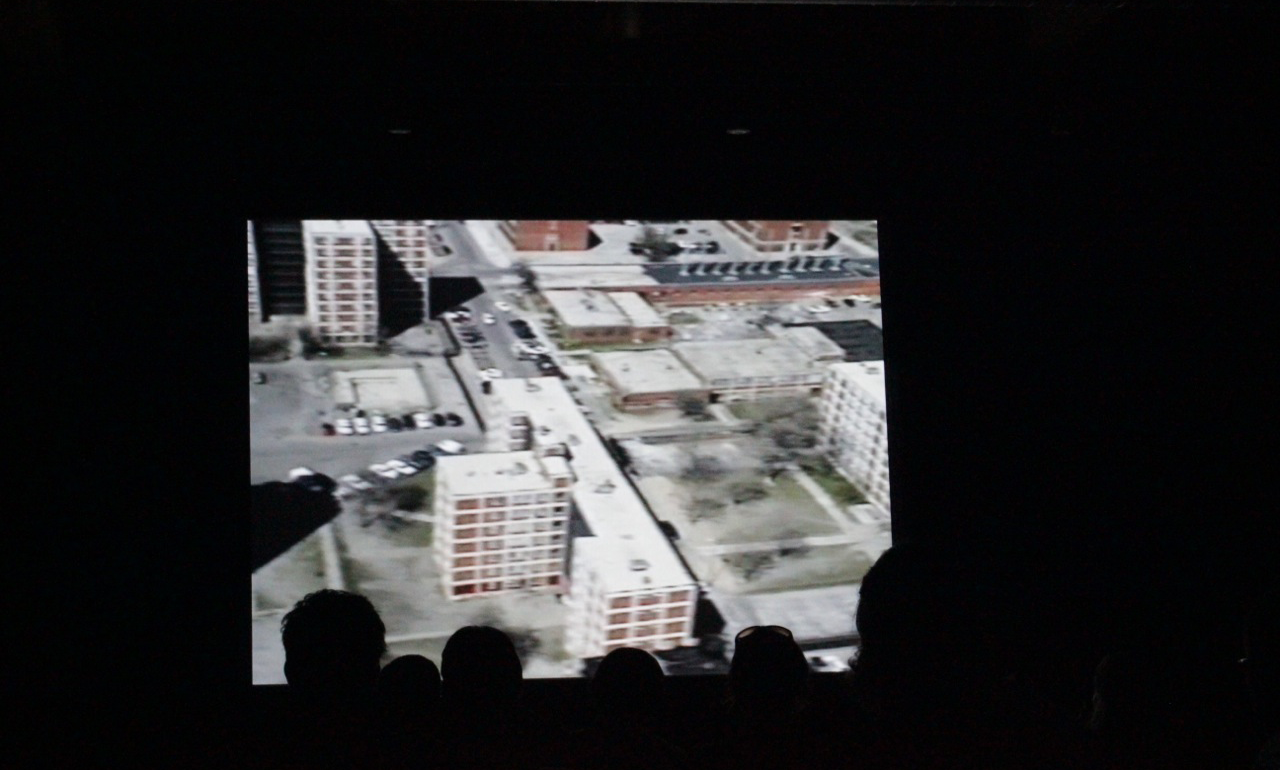The camera pans out over blocks of demolition and disarray, dizzying the viewer with a slow, swiveling descent from the top of a construction site. It’s 1953 in Chicago and “urban renewal” has only just become a national buzzword. It’s the proposed solution to the tension between Chicago’s nineteenth-century city plans and the twentieth-century reality of decrepit city-center tenements and white flight to the suburbs, a solution that entailed large-scale redevelopments of entire areas of the city, replacing tenements with public housing high-rises, relocating residents and businesses. Though championed early on, urban renewal was later considered by many to be an irresponsible and discriminatory program—James Baldwin famously referred to it as “Negro Removal.” When the camera completes its descent from the top of one such site of redevelopment, the narrator asks in a slick transatlantic accent, “The basic question is, how did our cities get this way?”
In the next thirty minutes of carefully curated voiceovers and vignettes of urban life, the documentary, The Living City, endeavors to answer that question––Why the urban blight? Why Chicago?––and to prove that urban renewal is the way forward.
The Living City (1953) was the first of three short films to play at the Black Cinema House earlier this month as part of the South Side Projections screening “Urban Renewal and its Aftermath.” Following The Living City were Inner City Dweller: Housing (1973) and Voices of Cabrini (1999), two films that look at urban renewal more critically, albeit with the advantage of hindsight. The three films, when played in chronological order, trace the reasoning behind and reaction to American urban renewal from its inception until today.
In The Living City, the perspectives of the city official and the businessman are featured at the expense of the citizens most affected by urban renewal. The viewer accompanies the factory owner on his hour-long commute by convertible. Later, city officials discuss the benefits of repurposing tenements for factory and office space.

The film comes off as naïve, due in part to how it plays up the inevitability and impersonality of historical phenomena. A resident of Pittsburgh, looking into the camera with a confused frown on her face, complains that the smoke and soot of the industrial revolution were the first causes of urban blight; the air quality was restored, she says, but now the railroad yards and slums are “blighting the city.”
Judy Hoffman, professor of Cinema and Media Studies at the University of Chicago, introduced the films and reminded the audience that the first documentary’s propagandistic character “provides important context for the ideas that brought about urban renewal.”
Towards the end, The Living City becomes almost farcical. The camera zeroes in on a wrecking ball, and with each strike to the building the narrator announces, “Here is one for all the couples living in rotten kitchenettes. And here is one for more open spaces and parks.”
Inner City Dweller: Housing takes a more nuanced approach to the effects of displacement, centering on the life of one man whose new house costs more to maintain than he can afford. The film takes jabs at the city officials behind the new policies––filmed always from the shoulder down, they spend the entirety of the film grappling with the economics of urban renewal. “This is all very confusing,” one faceless official eventually cedes to his colleague.

Only in the last documentary, Voices of Cabrini, does the perspective of those most impacted by urban renewal policy fully come through. Cabrini-Green was just as much a part of the Chicago urban renewal program as was demolition and the displacement of inner-city residents. It was constructed in 1942 as a mixed-income housing project, but plans for its destruction were announced in 1996, after decades of neglect from the Chicago Housing Authority and high crime rates. It was around that time that director Ronit Bezalel began filming. Bezalel, who spoke after the screening, said she had hoped for her film to serve as a medium for the voices of the soon-to-be former residents of Cabrini-Green. And indeed, it was the voices of residents that came through, both at full volume, as when she films them protesting against the Cabrini demolition, and more quietly, when she films inside the Cabrini halls where children are being raised and adults are discussing the future of Cabrini.
It took Bezalel four years to become familiar with the Cabrini community and to film the thirty-minute documentary. It meant unscripted conversations and years of sitting in the Cabrini barbershop where many of those conversations took place, but also overwhelming emotion that doesn’t come through in the scripted The Living City, or even in Inner City Dweller.
By the time Bezalel finished filming, most residents were beginning to move out, but the film lacks any tone of defeat. As father David Tkac explains to his son that they are moving out of Cabrini, his son asks why he is quitting. Tkac replies, “How am I quitting if I want something better for myself and you all? There’s absolutely nothing wrong with looking for something better…I think we deserve some peace of mind.”

